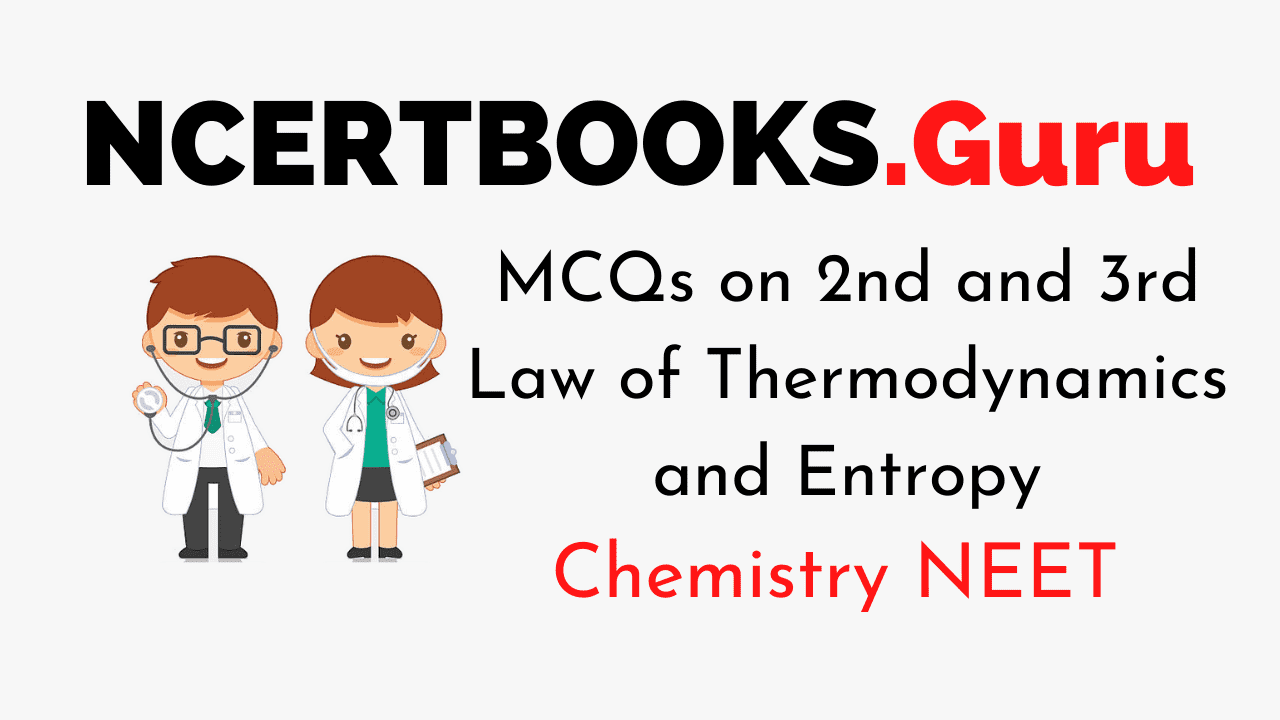NEET Chemistry is the scoring paper in the medical entrance examination. Here, you will discover the NEET Chemistry MCQ Questions for all Concepts as per the latest syllabus. Practice more on a regular basis with these NEET Chemistry objective questions on air pollution and improve your subject knowledge & problem-solving skills along with time management. NEET Chemistry 2nd and 3rd Law of Thermodynamics and Entropy Multiple Choice Questions make you feel confident in answering the question in the exam & increases your scores to high.
MCQs on 2nd and 3rd Law of Thermodynamics and Entropy
1. Which of the following processes is used to do maximum work done on the ideal gas that is compressed to half of its initial volume?
(a) isothermal
(b) isochoric
(c) isobaric
(d) adiabatic
Answer
Answer: (d)
2. What is the ratio of Cp/Cv for gas if the pressure of the gas is proportional to the cube of its temperature and the process is an adiabatic process?
(a) 2
(b) 3/2
(c) 4/3
(d) 5/3
Answer
Answer: (b)
3. The coefficient performance of a refrigerator is 5. Calculate the heat rejected to the surrounding if the temperature inside the freezer is -20oC
(a) 11oC
(b) 41oC
(c) 21oC
(d) 31oC
Answer
Answer: (d)
4. What is a necessary condition for a reaction to be spontaneous at all temperatures?
(a) 𐤃H < 𐤃G
(b) 𐤃G and H should be positive
(c) 𐤃H = 𐤃G = 0
(d) 𐤃G and 𐤃H should be negative
Answer
Answer: (d)
5. Which of the following factor affects the heat of reaction based on Kirchhoff equation?
(a) molecularity
(b) temperature
(c) pressure
(d) volume
Answer
Answer: (b)
6. Chemical dissociation is
(a) exothermic
(b) reversible
(c) endothermic
(d) reversible and endothermic
Answer
Answer: (d)
7. Which of the following is the largest unit of energy?
(a) electron volt
(b) joule
(c) calorie
(d) erg
Answer
Answer: (c)
8. A perfect black body has a unique characteristic feature as
(a) a good absorber only
(b) a good radiator
(c) a good absorber and a good radiator
(d) neither a radiator nor an absorber
Answer
Answer: (c)
9. A thermodynamic process where no heat is exchanged with the surroundings is
(a) isothermal
(b) adiabatic
(c) isobaric
(d) isotropic
Answer
Answer: (b)
10. Which of the following laws was formulated by Nernst?
(a) First law of thermodynamics
(b) Second law of thermodynamics
(c) Third law of thermodynamics
(d) None of the above
Answer
Answer: (c)
